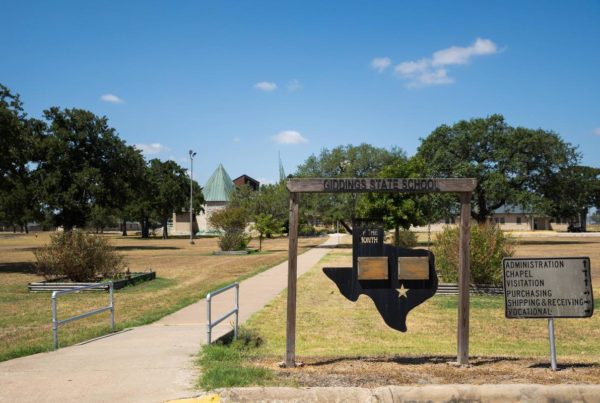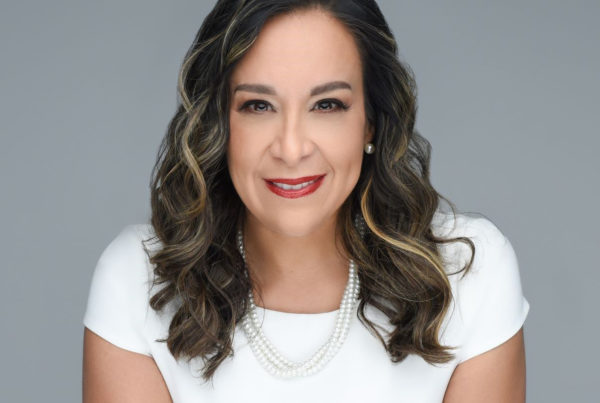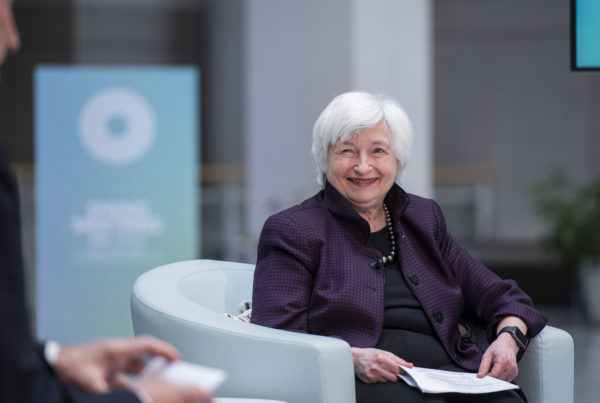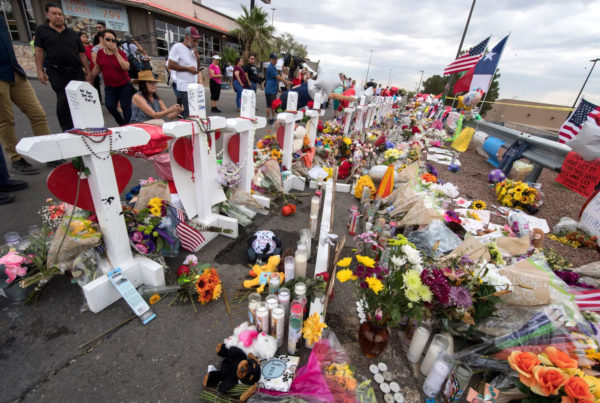In football, the quarterback is the leader – the person most credited with the outcome of the game, and the person most visible to fans.
So what that person looks like is important. And for decades at the NFL level, that person was white. Jason Reid, a senior NFL writer for ESPN, tracks the changes in Black visibility in the league through history and its broader impact in his new book “Rise of the Black Quarterback: What it means for America.”
The book shares the stories of Texans Kyler Murray and Patrick Mahomes, among many others. Reid shared some of those stories with Texas Standard:
This transcript has been edited lightly for clarity.
Texas Standard: Can you remind us a bit of the path toward integration and representation on the field?
Jason Reid: You know, it wasn’t until the late 1980s, early 1990s, where you first started seeing the Black quarterback, an African-American man, playing the most important position in team sports – not just football, but in team sports. Actually playing that position and not being an oddity. It not being something that people were like, “Whoa, wait a minute, you know, what’s going on here?”
And now there’s just Black quarterbacks, star Black quarterbacks, many throughout the game, many young ones coming in. I mean, you look at the football powerhouses of the world, the USCs, the Ohio States, the Alabamas. There are others, but those three are led by Black quarterbacks. So we’re at a point right now, and I like to call it the era of the Black quarterback, where there are more superstar Black quarterbacks in the NFL than ever before. And there is this deep pipeline that’s flowing, and you’re going to see more and more of these guys coming in today.
Was there some event or some quarterback who sort of broke things open?
Well, many people will point to Doug Williams’ iconic, myth-busting performance in the Super Bowl, where Doug Williams became the first Black man to start as quarterback in the Super Bowl and win the game’s MVP award in Washington’s dominating victory over Denver. But what I really point to is that after that moment, there was an acknowledgment – a very slow acknowledgment, but acknowledgment nonetheless – by NFL team owners and executives: “Well, wait a minute. If a Black guy can do this, maybe they all can’t do it, but maybe some more of them can.” And the money got to be so big in the NFL that team owners were putting so much pressure on executives and coaches to win, that they could no longer just ignore someone because of the color of their skin. You could not exclude them from playing quarterback.
Can you say a little bit more about why the position of quarterback is so critical?
Well, the quarterback position is the most important position in professional sports. And if Black men were excluded from that position simply because they were not considered to be smart enough and capable enough of playing that position, that says a lot about Black people in general. And so once you started to have Black quarterbacks get opportunities and succeed, what you saw was a different opinion about Black people in the league in terms of, okay, well, if they can do this, the people who control the league and control what happens. It changed perceptions about a lot of things. And, you know, you start to see finally African-American coaches in the modern era. You start to see African-American general managers in the modern era. So the success of the Black quarterback really began, in a slow process, but began to change things within the league.
The last four chapters of your book focus on four modern-day Black quarterbacks, and a few of them have Texas ties. But I think we do a disservice if we don’t talk about Colin Kaepernick right up front. Can you talk about the role he’s played?
You know, wherever you come down, whatever side of the fence you come down on his peaceful protests to shine a light on systemic oppression and police brutality, the reality of it is that he was someone who really changed a lot. Never before in the NFL had a quarterback taken a stand on social issues. That’s just not something that NFL quarterbacks have done. And the fact that Kaepernick is Black as well, you know, he’s biracial, but he’s Black as well. The fact that he did that, it forced the league to go to places that it had never gone to previously and didn’t want to go to.
You know, we can debate about how good of a quarterback he was, but he was more than good enough to be on an NFL roster the past five years. And the only reason he hasn’t been is because team owners were angry that he messed with their business model and they were worried that he could do long-term damage to the league. They’re still angry at him, and it’s why he’s not in the league.
Let’s turn now to Kyler Murray, born in Bedford, schooled in Allen, Texas. What does his story tell you?
Well, you know, I picked the four quarterbacks because they all represent something about the game, a change in the game. And never before in the history of the NFL would a 5-foot-9, 5-foot-10 Black quarterback be the No. 1 overall pick in the NFL draft. But Kyler Murray, as anybody in Texas knows who Kyler Murray is, the incredible run that he had in Allen. He went to Texas A&M for a minute there, wins a Heisman Trophy at Oklahoma. He represents how the game has evolved, the way offenses have evolved, the way that perceptions have evolved. And so he’s very important, another person, when you want to look at the game and the way the game has changed: Look at Kyler Murray.
Patrick Mahomes was born in Tyler, went to school in Whitehouse and then went on to college at Texas Tech; Super Bowl champion. Why was he important for you to focus on?
The pioneers, the old timers – the Warren Moons, the Doug Williamses, the James “Shack” Harrises – when I talked to them for the book, one of the things they told me was that they always believed that if Black men at that position got a chance to play, if they got opportunities in the NFL, eventually a Black man would be the best quarterback in the NFL. And Patrick Mahomes, you can make an argument, he’s anywhere between 1 to 3 right now. He’s definitely in the top five.
But there were a couple of years there back in 2019 and 2020 when he won the league MVP award after the 2018 season. He was a Super Bowl champion and the Super Bowl MVP after the 2019 season. He was the No. 1 quarterback. So Patrick Mahomes is what all of the pioneers had hoped for. That eventually one of them, if they got the opportunity, would rise up and show that not only could Black quarterbacks play in this league, but they could be the best in the league.
I want to go back to the title “Rise of the Black Quarterback,” which we’ve been talking quite a lot about here. But, you know, the second part of that title, “What It Means for America,” how do you encapsulate that?
Quarterback is a uniquely American leadership position. In corporate America, when someone leads a big project, they’re known as the quarterback of the project. If you’re going in for a medical procedure, your doctor’s your quarterback. He’s the one who has to get you through this thing. So the quarterback in American culture represents everything: The best, the smartest person in the room, the strongest. He’s the one who inspires leadership.
So when you look at the rise of the Black quarterback, when you see Black faces in a position, the most important position in team sports that was once the exclusive domain of white players, it’s going to start to change peoples’ minds. For young Black kids, that representation enables them to say, “wait a minute, you know, I can do this, too. I see people who look like me doing this and excelling at something that I always thought we weren’t allowed to do.” And for people who are not Black, it prompts many, I believe, to reevaluate things that they considered were just, you know, baked into the way the country is. So I think that the excellence at that position, the most important position in team sports, has helped to change a lot of other things.














